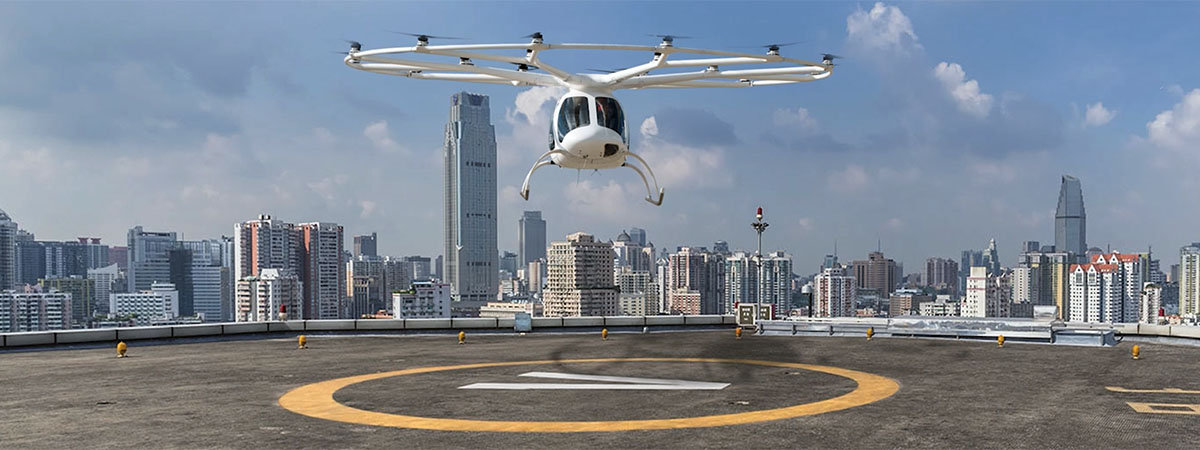Throughout history, revolution in transportation has generated significant transformations in society. Today we are experiencing a period of unprecedented changes in the field of mobility, with the rise of Advanced Air Mobility (AAM).
The development of AAM focuses on three key areas: certification of eVTOL vehicles, airspace regulation and navigation systems, and the construction of vertiport infrastructure and networks.
The development of Advanced Air Mobility (AAM) requires a comprehensive approach that encompasses aircraft certification, airspace regulation, and vertiport implementation.
eVTOL certification is advancing globally, although at different speeds depending on the regulatory authority in each country. China has spearheaded this process with the certification of EHang eVTOLs (autonomous vehicles), giving them a competitive advantage in this emerging market. Other companies, such as Joby Aviation and Archer Aviation, continue to advance, with the goal of launching commercial operations in Dubai and Abu Dhabi by early 2026.
In Europe and the United States, the European Union Aviation Safety Agency (EASA) and the Federal Aviation Administration (FAA) have reached key milestones in the certification process, establishing regulatory foundations for the safe operation of eVTOLs in the coming years.
As regards airspace and operations regulation, aviation authorities are working on developing specific regulations for eVTOL pilot training and certification, as well as for the design of operational protocols. Airspace management is among the most relevant challenges, seeking to ensure the safe integration of eVTOLs in already congested urban environments. Work is also underway to define controlled U-spaces for unmanned vehicles.
The third key area for the development of AAM is the implementation of a vertiport network, ensuring its integration into the Mobility-as-a-Service (MaaS) model.
The design and planning of these vertiports must consider key factors such as their number, location, and size, to ensure optimal connectivity with other modes of transportation while maximizing effective demand.
Vertiports can be classified according to various criteria, including size, location, or proximity to airports and other modes of transportation. These factors determine the design, service, and equipment requirements of each vertiport.
Vertiports require various facilities to ensure their proper operation:
- Aircraft operations infrastructure.
- Passenger facilities.
- eVTOL support facilities.
As regards aircraft operations infrastructures, various regulations have been published that define the requirements based on the characteristics of eVTOLs operating at vertiports. The main characteristics to consider are:
- Diameter of the smaller circle enclosing eVTOL projection on a horizontal plane.
- ODRV (Takeoff Distance Required Vertically).
- LDRV (Landing Distance Required Vertically).
- MTOM (Maximum Takeoff Mass).
- Downwash protection (descending air current).
- UCW (Undercarriage Width).
These characteristics will define the dimensions of the FATO (Final approach and take-off area), the TLOF (Touchdown and lift-off area), Safety Area, taxiways and parking positions.
Due to the nature of this type of transport, passenger facilities must be designed to guarantee a flow of passengers that is fluid, efficient and fast.
Passenger facilities are sized based on the number of available parking slots, the number of seats per eVTOL vehicle, and aircraft turnover time, considering the reduced passenger waiting times at these infrastructures.
Passengers will book their tickets mainly through the operator through a booking system that allows compiling passenger data, such that passenger check-in may be fluid and quick. Once passengers arrive at the vertiport, the following requisites must be kept in mind:
- Drop-off, since vertiports will be integrated with other modes of transport, an analysis of the connections must be conducted to ensure passenger minimum walking distances. Furthermore, parking spaces must be planned for near the terminal building for passengers arriving in personal vehicles.
- Passenger identification and baggage management; a check-in process using an automated, non-intrusive system to recognize and verify authorized passengers. The kiosk will check passenger identity and information against their previously registered information, will remind them of forbidden items and inform them about the itinerary, and will indicate the boarding gate. Baggage will be handled in this phase. Given the limitation of the eVTOL’s maximum payload, the baggage process must differ from traditional airports. Two distinct baggage flows must be borne in mind:
- If the combined weight of passengers and baggage does not exceed the maximum payload, baggage may travel with passengers after security control.
- If the combined weight exceeds the maximum payload, baggage cannot be transported on the eVTOL and must be handled separately and transported by alternative means. In some cases, there may be a significant time difference between the passenger’s arrival and the arrival of their baggage. Whenever possible, baggage will be collected before the flight to ensure both the passenger and their baggage arrive at their destination at approximately the same time. Alternatively, passengers can specify the destination for their baggage, allowing them to choose the collection point.
- Security check: If security is required, it must be non-intrusive. Carry-on baggage must be inspected and weighed.
- Depending on the size of the vertiport, a comfortable and functional waiting area may be defined, taking into account minimum passenger waiting time. If size allows, vertiports must include services such as Wi-Fi, electric charging stations, and other amenities, and even a small commercial area.
- BOARDING & FLY: Passengers will board their eVTOL through the designated gate, which should be located as close as possible to minimize distance and time.
- Arrivals: Upon deboarding, passengers will be guided through a walkway leading to the baggage claim area (if applicable) or the terminal exit.
eVTOL support facilities are necessary to ensure the maintenance and management of vertiports as well as user comfort.
- eVTOL navigation and control system:
- Meteorological information systems with special emphasis on wind. FOD identification sensors and others.
- Charging facilities that guarantee reliable and efficient power generation and supply to ensure the shortest possible turnover time and thus increase efficiency. The number of chargers will depend on the hourly demand and charging times of the installed equipment. Charger capacity will depend on the mix of eVTOLs operating at the vertiport.
- In larger vertiports, an eVTOL maintenance area can be considered.
Two centuries ago, owning a car was a luxury reserved for a select few, with a driver up front and room for just one or two passengers. Today, however, it is common for every family to own one or even two cars. Similarly, a hundred years ago, when commercial flights began, flying was an exclusive privilege, whereas today it is a means of transportation accessible to millions of people.
The development of Advanced Air Mobility (AAM) follows this same evolution and requires a comprehensive approach that encompasses aircraft certification, airspace regulation, and the implementation of vertiports.



